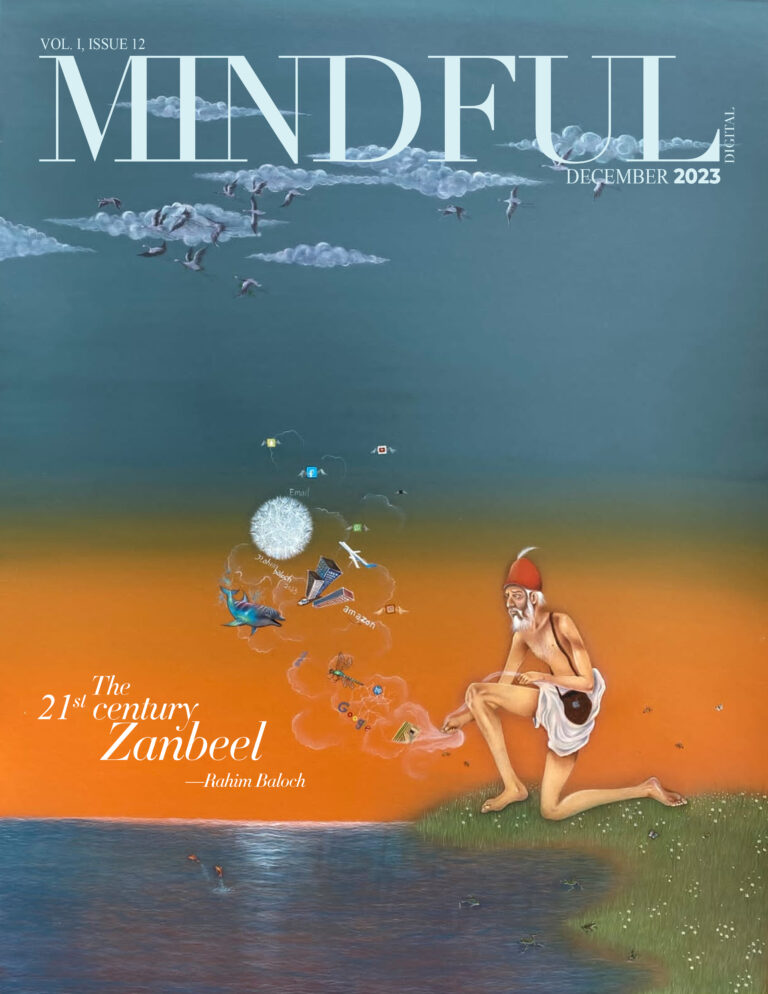Baloch draws inspiration from Ustaad Allah Bux’s ‘Tilism-E-Hoshruba’ (1935), marking a profound shift into a new millennium laden with the hopes and anxieties that accompany change.
Set in the era of the Mughal Emperor Akbar, the enigmatic figure ‘Umro Ayyar,’ endowed with unique gifts and mysterious techniques, emerges as a fictional character from ‘Tilism-E-Hoshruba’ (Hamzanama). Umro wields a magical ‘Zanbeel’ (bag) that grants him the ability to extract anything he desires.
Baloch takes creative freedom to another level as he innovates by using the iconic iPhone symbol on the ‘Zanbeel’ to illustrate the enchantment of technology.
His painting serves as a fresh lens through which one is encouraged to perceive the world. In the conclusion, there is an emphasis on Baloch’s work as a unifying force in our globalized era, prompting viewers to engage with the “image and the object representing nothing but itself” (Jasper Johns).
This captures the essence of the painter’s work and the painting’s power as boundaries are left behind in a transcending journey of connection with the end goal of pure representation.
Courtesy: @rahimbaloch.studio



